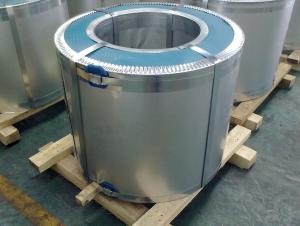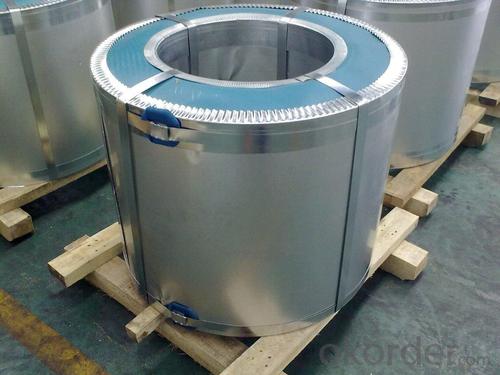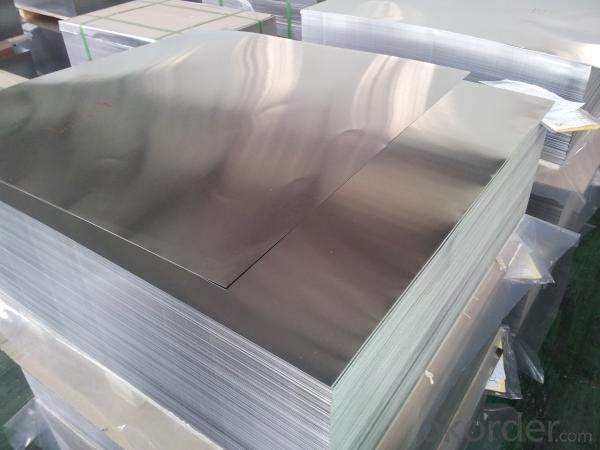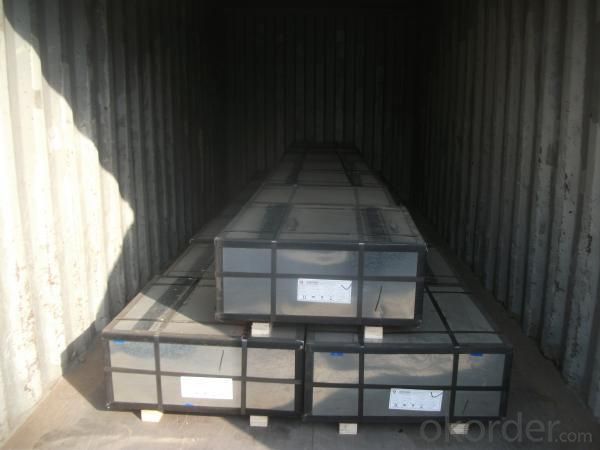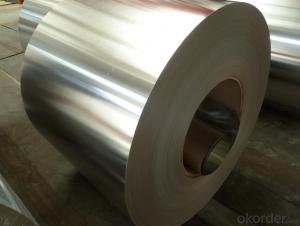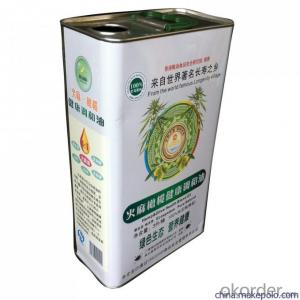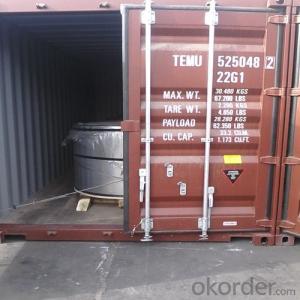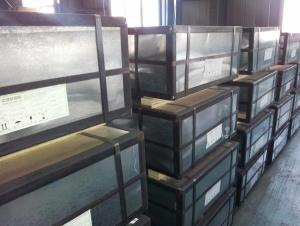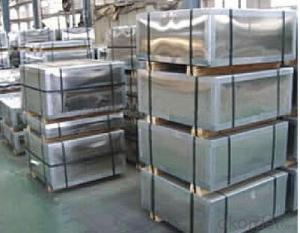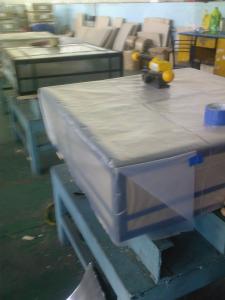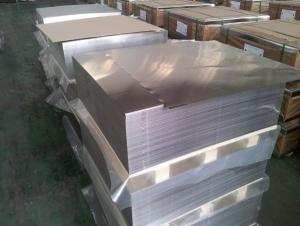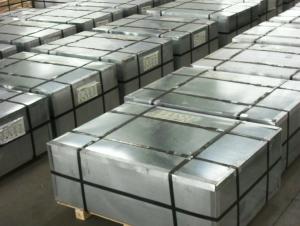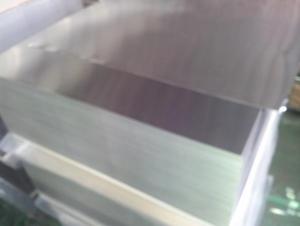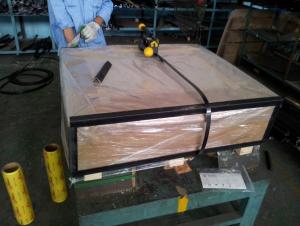Tinplate For Aerosol Can-CFX
- Loading Port:
- China Main Port
- Payment Terms:
- TT or L/C
- Min Order Qty:
- 20 Tons~25 Tons m.t.
- Supply Capability:
- 40000 MT Per Month m.t./month
OKorder Service Pledge
OKorder Financial Service
You Might Also Like
General information of Tinplate For Aerosol Can
|
Steel Type |
SPCC |
|
Temper (BA&CA) |
T1~T5, DR8 |
|
Coating |
2.8~8.4g/m2 |
|
Thickness & Tolerance |
0.15~0.5mm (Tolerance:±0.01mm) |
|
Width & Tolerance |
600~1000 mm(Tolerance: +2/-0mm) |
|
I.D |
508 MM |
|
Coil Weight |
3~10 MT |
|
Passivation |
311 |
|
Oiling |
DOS |
|
Surface Finish |
Bright ,Stone ,Silver ,Matte |
|
Min Order |
25 Tons for 1 20 feet FCL |
|
Package |
Seaworthy Export Standard Wooden Pallet |
|
Standard Available |
GB/T2520-2000, JIS G3303, ASTM A623, BS EN10202 |
|
Lead Time |
35 days after receiving buyer's original L/C or Prepayment |
|
Special specifications are available on customers' requirements. | |
Technical data of Tinplate For Aerosol Can
|
Chemical Composition(%) |
Mechanical Property |
|
C:0.04~0.06 |
Yield Strength: (Mpa):280~320 |
|
Si:0.01~0.03 |
TensileStrength: (Mpa):340~390 |
|
Mn:0.18~0.22 |
Elongation:20%~30% |
|
P:0.014~0.016 |
------------- |
|
S:0.006~0.009 |
Applications of Tinplate For Aerosol Can
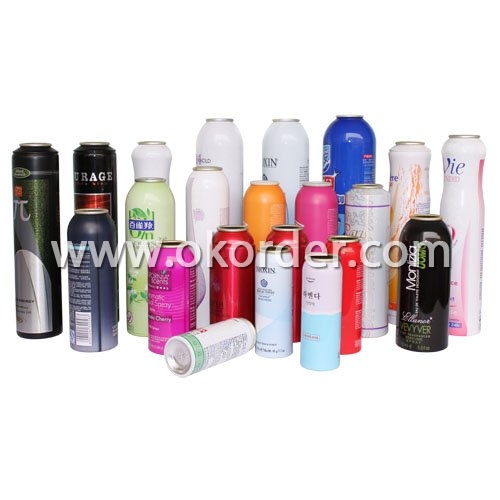
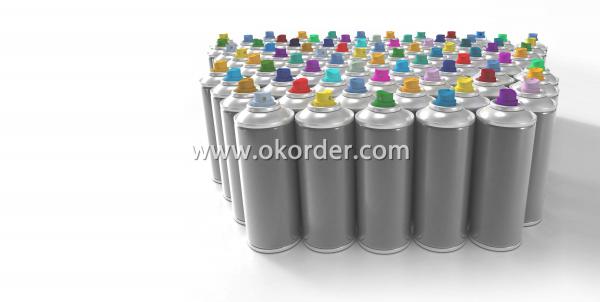
Tinplate is widely used for making all types of containers such as artistic cans, tea cans,
painting cans, chemical package cans and metal printing etc. Its applications are
not limited to containers; recently, tinplate has also been used for making
electrical machinery parts and many other products.
Equipment and Facility
Tin Coating Line
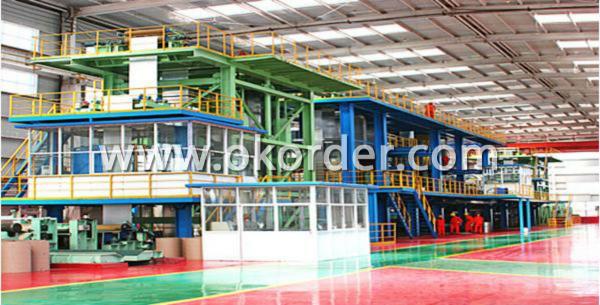
Cold Rolling Mill Batch Annealing Furnaces
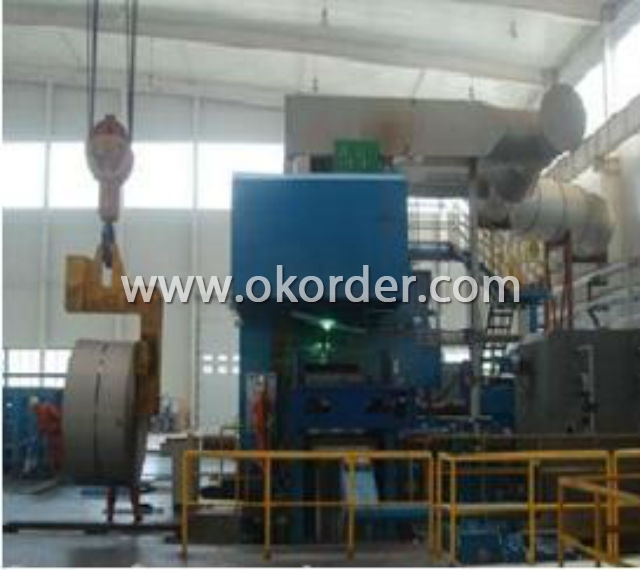
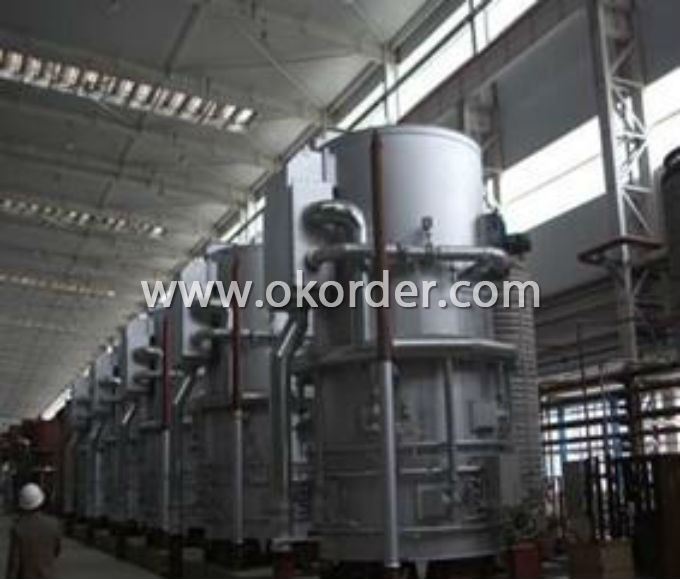
Cutting Line Stock Area
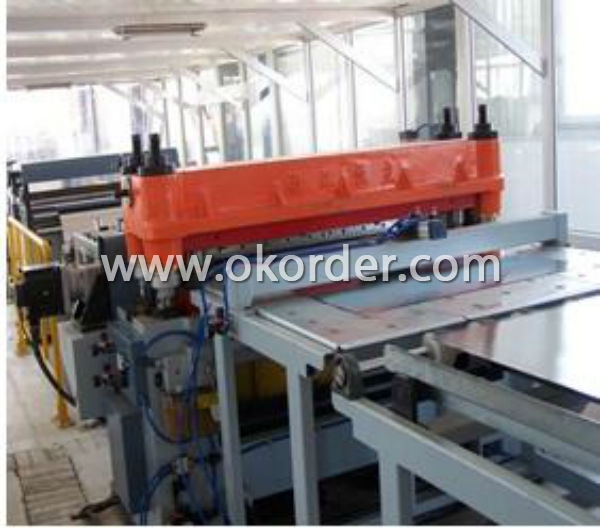
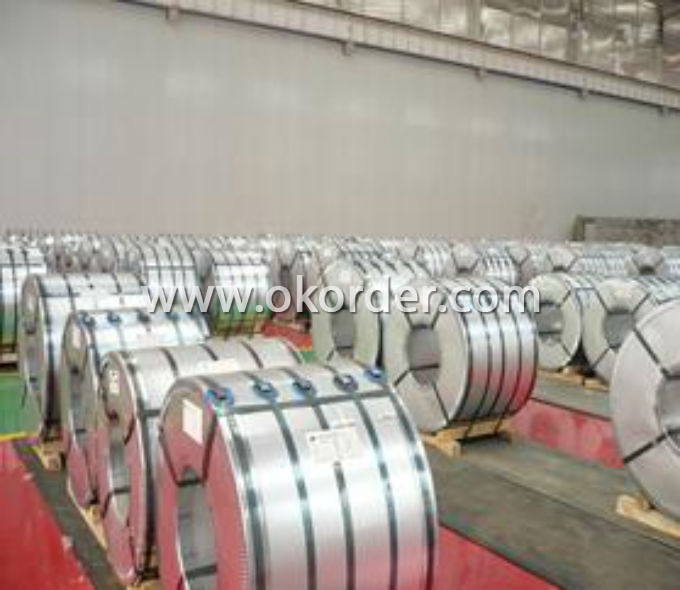
Quantity Control System
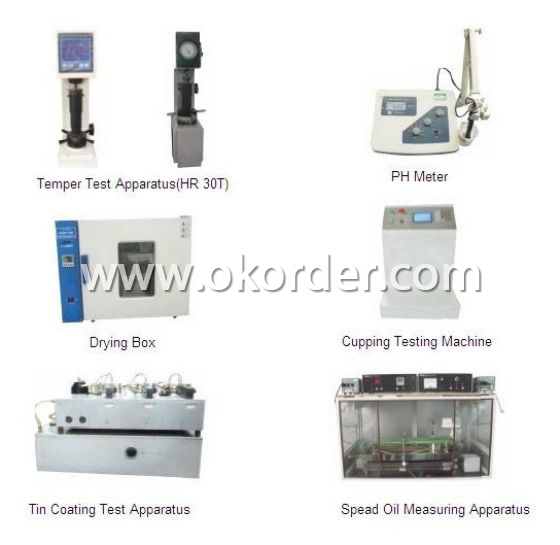
- Q: Can tinplate be used for packaging tobacco products?
- Yes, tinplate can be used for packaging tobacco products. Tinplate is a commonly used material for packaging due to its durability, ability to preserve the freshness of the contents, and its resistance to corrosion. It is a popular choice for packaging tobacco products as it helps to maintain the flavor and quality of the tobacco.
- Q: What are the typical manufacturing processes for tinplate products?
- The typical manufacturing processes for tinplate products include coil cutting, cleaning, annealing, coating, baking, and shaping.
- Q: How does tinplate perform in high-temperature applications?
- Tinplate generally performs well in high-temperature applications due to its high melting point and excellent heat resistance properties. It can withstand temperatures up to 250 degrees Celsius without significant deformation or loss of its protective tin coating. However, at temperatures above this range, tinplate may start to experience oxidative reactions and potential degradation. Additionally, prolonged exposure to high temperatures can cause the tin coating to become brittle and lose its protective properties. Therefore, while tinplate is suitable for many high-temperature applications, it is important to consider specific temperature limits and potential impacts on its performance.
- Q: How does tinplate compare to plastic packaging?
- Tinplate packaging offers several advantages over plastic packaging. Firstly, tinplate is more durable and can withstand higher temperatures, making it suitable for preserving food and beverages. It also provides better protection against external factors such as sunlight, moisture, and oxygen, thus ensuring the longevity and quality of the contents. Additionally, tinplate is fully recyclable and has a higher recycling rate compared to plastic, making it a more sustainable choice. Lastly, tinplate packaging has a premium appearance that can enhance the product's perceived value and appeal to consumers.
- Q: What are the different tinplate finishes available?
- There are several different tinplate finishes available, including bright, stone, matte, and lacquered. These finishes offer varying levels of shine, texture, and protection to the tinplate surface.
- Q: Can tinplate be used for pharmaceutical blister packaging?
- Yes, tinplate can be used for pharmaceutical blister packaging. Tinplate is a commonly used material in pharmaceutical packaging due to its excellent barrier properties against moisture, oxygen, and light. It provides protection for the pharmaceutical products, ensuring their stability and prolonging their shelf life. Additionally, tinplate is also recyclable, making it an environmentally friendly choice for blister packaging.
- Q: Can tinplate packaging be used for pet care products?
- Yes, tinplate packaging can be used for pet care products. Tinplate is a durable and versatile material that can provide excellent protection for various products, including pet care items such as food, treats, and grooming products. It offers airtight and moisture-resistant properties, ensuring the freshness and quality of the contents. Additionally, tinplate packaging can be designed with visually appealing graphics, enhancing the overall presentation and shelf appeal of pet care products.
- Q: Can tinplate be used for confectionery packaging?
- Yes, tinplate can be used for confectionery packaging. Tinplate is a type of steel coated with a thin layer of tin, making it a durable and food-safe material. It provides excellent protection against moisture, light, and oxygen, which are important for maintaining the freshness and quality of confectionery products. Additionally, tinplate can be easily shaped and decorated, allowing for attractive and customized packaging designs.
- Q: How does tinplate perform in terms of odor resistance?
- Tinplate generally demonstrates good odor resistance due to its non-reactive nature and protective tin coating, which helps prevent any unwanted odors from permeating the material or affecting the contents stored inside.
- Q: How does tinplate compare to plastic in terms of sustainability?
- Tinplate generally has a higher sustainability profile compared to plastic due to several reasons. Firstly, tinplate is a highly recyclable material, with a recycling rate of around 90%, while plastic recycling rates vary and are generally lower. This means that tinplate is more likely to be reused and diverted from landfills, reducing its environmental impact. Additionally, tinplate production requires significantly less energy and emits fewer greenhouse gases compared to plastic manufacturing. Moreover, tinplate is more durable and has a longer lifespan, making it suitable for multiple uses, whereas plastic is often single-use and contributes to the growing waste problem. Overall, tinplate offers better sustainability prospects in terms of recycling, energy consumption, and durability compared to plastic.
1. Manufacturer Overview
| Location | Hebei,China |
| Year Established | 2006 |
| Annual Output Value | Above US$100 Million |
| Main Markets | Singapore;Belgium |
| Company Certifications |
2. Manufacturer Certificates
| a) Certification Name | |
| Range | |
| Reference | |
| Validity Period |
3. Manufacturer Capability
| a) Trade Capacity | |
| Nearest Port | Tianjin |
| Export Percentage | 1% - 10% |
| No.of Employees in Trade Department | |
| Language Spoken: | English;Chinese |
| b) Factory Information | |
| Factory Size: | Above 240,000 square meters |
| No. of Production Lines | Above 11 |
| Contract Manufacturing | |
| Product Price Range | High;Average |
Send your message to us
Tinplate For Aerosol Can-CFX
- Loading Port:
- China Main Port
- Payment Terms:
- TT or L/C
- Min Order Qty:
- 20 Tons~25 Tons m.t.
- Supply Capability:
- 40000 MT Per Month m.t./month
OKorder Service Pledge
OKorder Financial Service
Similar products
Hot products
Hot Searches
Related keywords
